Sites from the Seerah: Retracing the footsteps of Prophet Muhammad (SAW)
The sacred journey taken by Prophet Muhammad (SAW) over the deserts of Arabia more than 1400 years ago shapes how Muslims live their lives today.
The story of Islam is deeply rooted in this ancient land. It offers a glimpse into the struggles and spiritual journey Prophet Muhammad (SAW) and his companions undertook in the early years of the faith.
As Muslims, we are familiar with the significant landmarks in Islam, such as the Kaaba and Grand Masjid in Makkah, the Masjid an-Nabawi in Madinah, and the other recognisable sites visited during Hajj and Umrah.
But what further historic landmarks and sites related to Islam are there to explore in the region? Follow this journey through the Seerah (study of the life) of the Prophet (SAW). Trace his footsteps by visiting these historic sites of great religious importance.
Historic sites to explore near Makkah and Madinah
Cave of Hira
The historic cave located on Jabal Nur, also known as the Mountain of Light, near Makkah is a significant spiritual site. It is where the angel Jibril (AS) first revealed verses of the Quran to the Prophet (SAW) when he was alone in the cave, where he had gone as a retreat, which was traditional during the month of Ramadan.
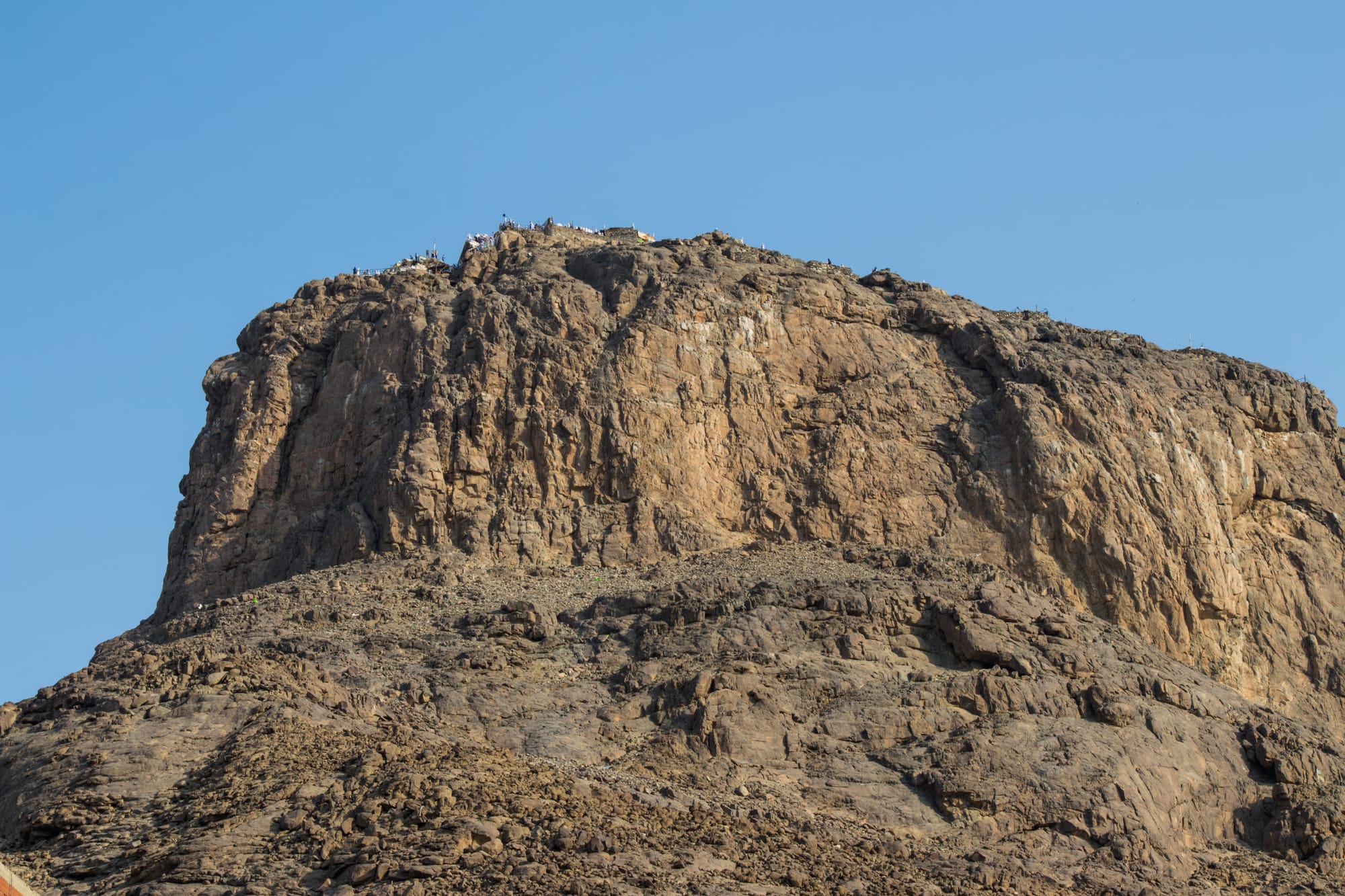
The angel first came to him in the form of a man and asked the Prophet (SAW) to recite.
“I cannot read”, the Prophet (SAW) replied. The angel took hold of him and embraced him until he could not endure it any longer. After letting him go, the angel again said, “Recite!”. Again the Prophet (SAW) replied “I cannot read”. The angel further embraced him again until he had reached the limit of his endurance and said “Recite!”. For the third time the Prophet (SAW) said “I cannot read”. The angel released him and said: “Read in the name of your Lord, the Creator. He Who created man from a clot. Read! And your Lord is the Most Bounteous. Who taught by the Pen, taught man what he knew not.” [96:1-5]
After the Prophet (SAW) had recited these words after him, he fled from the cave. When he was half way down the slope, he heard a voice calling him and saw the angel above him, still recognisable, but now clearly an angel. The angel revealed himself as the angel Jibril (Gabriel) and told Muhammad (SAW) that he was the Messenger of God.
Hira is around 6 km from Makkah and about 640 m high. Although the hike to the top can take up to two hours, the breathtaking views of the city make the spiritual journey more than worthwhile. It’s best to start the hike just after Fajr to avoid the heat. Don’t forget to take a bottle of water with you and keep it close to you, as there are monkeys there, which can be a nuisance, stealing anything in their reach - including water bottles, food and bags.
Cave of Thawr
To the south of Makkah's centre stands another famous mountain and cave, Jabal Thawr, etched into the memory of Muslims. It is where Prophet Muhammad (SAW) and his companions hid from the Quraish for three days and nights. Whilst they hid, a spider weaved a web at the entrance of the cave and a pigeon laid eggs nearby, which misled the pursuers into believing the cave was undisturbed.

Taif
After facing immense oppression in Makkah, the Prophet (SAW) went to the city of Taif, located to the east of Makkah, hoping to find support and propagate Islam. But in Taif, the Muslims faced further abuse and rejection. When the Prophet (SAW) was informed that Allah (SWT) could destroy the people of Taif for their insolence, he chose to forgive them and prayed for their guidance instead. The mountainous city is now renowned for its breathtaking views and fragrant roses.
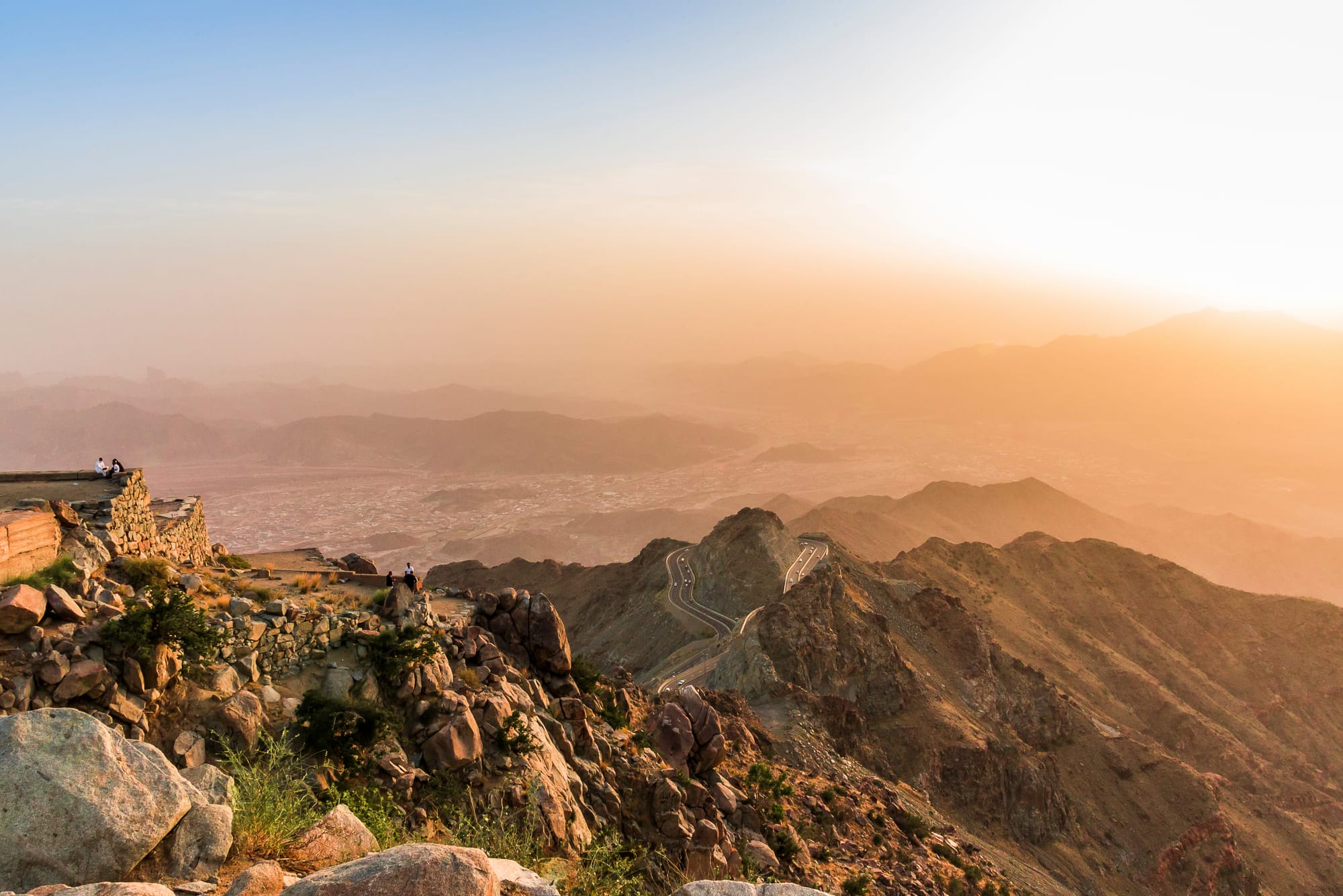
Masjid Quba
Prophet Muhammad (SAW) built the masjid shortly after the hijrah from Makkah to Madinah in 1 AH (622 CE). Around 4 km from the Masjid an-Nabawi in Madinah, it is the first place of worship in Islam. The original construct was built with mud bricks and date palm trunks.
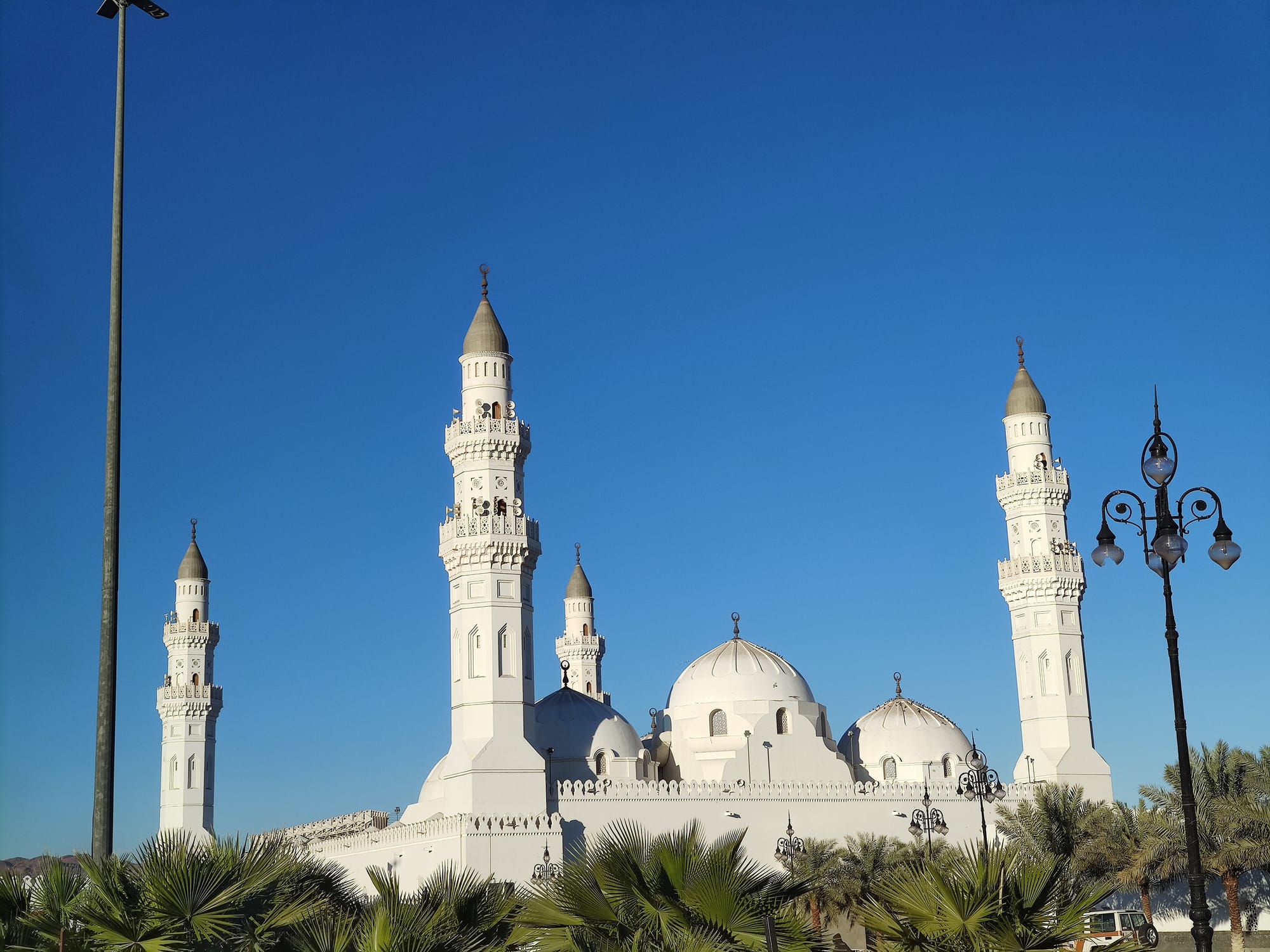
“The Prophet Muhammad (SAW) is reported to have said: 'Whoever goes out to offer prayers in this mosque (Quba), will have a reward equal to that of Umrah'.” Tirmidhi
Masjid Qiblatain
Located in Madinah and also known as the Mosque of the Two Qiblas, it is where the Qibla was shifted from Al Quds (Jerusalem) to Makkah in 2 AH. During prayer, the Prophet Muhammad (SAW) was commanded by a Quranic revelation to change direction to the Kaaba in Makkah. All the Sahaba immediately followed suit. It is one of the few mosques in the world to have contained two mihrabs (niches indicating the qibla) facing in different directions.
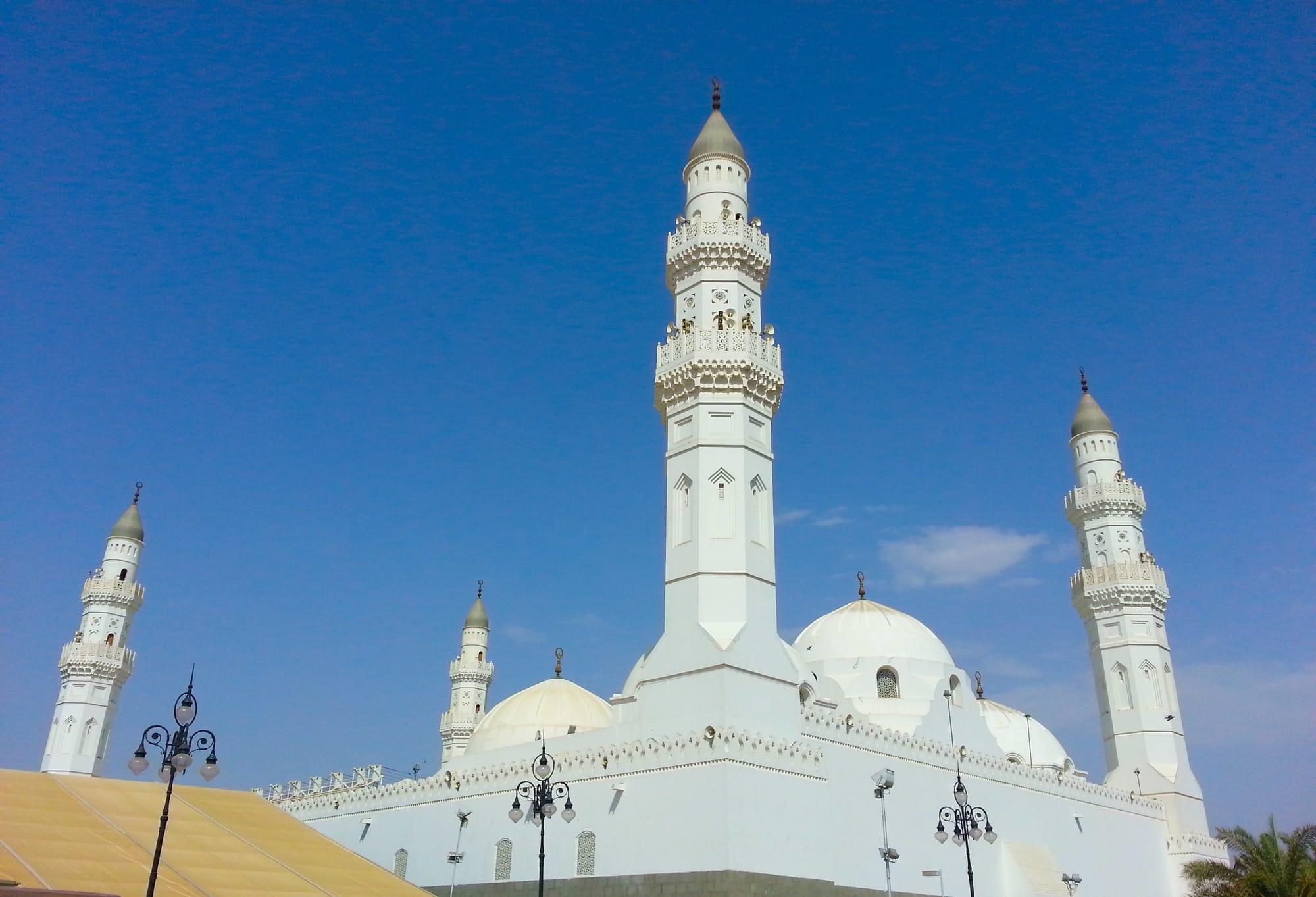
"Verily, We have seen the turning of your (Muhammad's) face towards the heaven. Surely, We shall turn you to a Qiblah (prayer direction) that shall please you, so turn your face in the direction of Al-Masjid Al-Haram (at Makkah). And wheresoever you people are, turn your faces (in prayer) in that direction." [2:144]
Battle of Badr
The 17th of Ramadan marks the anniversary of this significant battle in 2 AH when Prophet Muhammad (SAW) and his companions defeated a powerful army from the Quraish despite being outnumbered. An important place to visit is Adwa Dunya — the sandy mountain where the Prophet (SAW) was stationed at the start of the battle.

Another key spot is Masjid Al-Areesh, where the Prophet (SAW) prayed during the historical conflict.
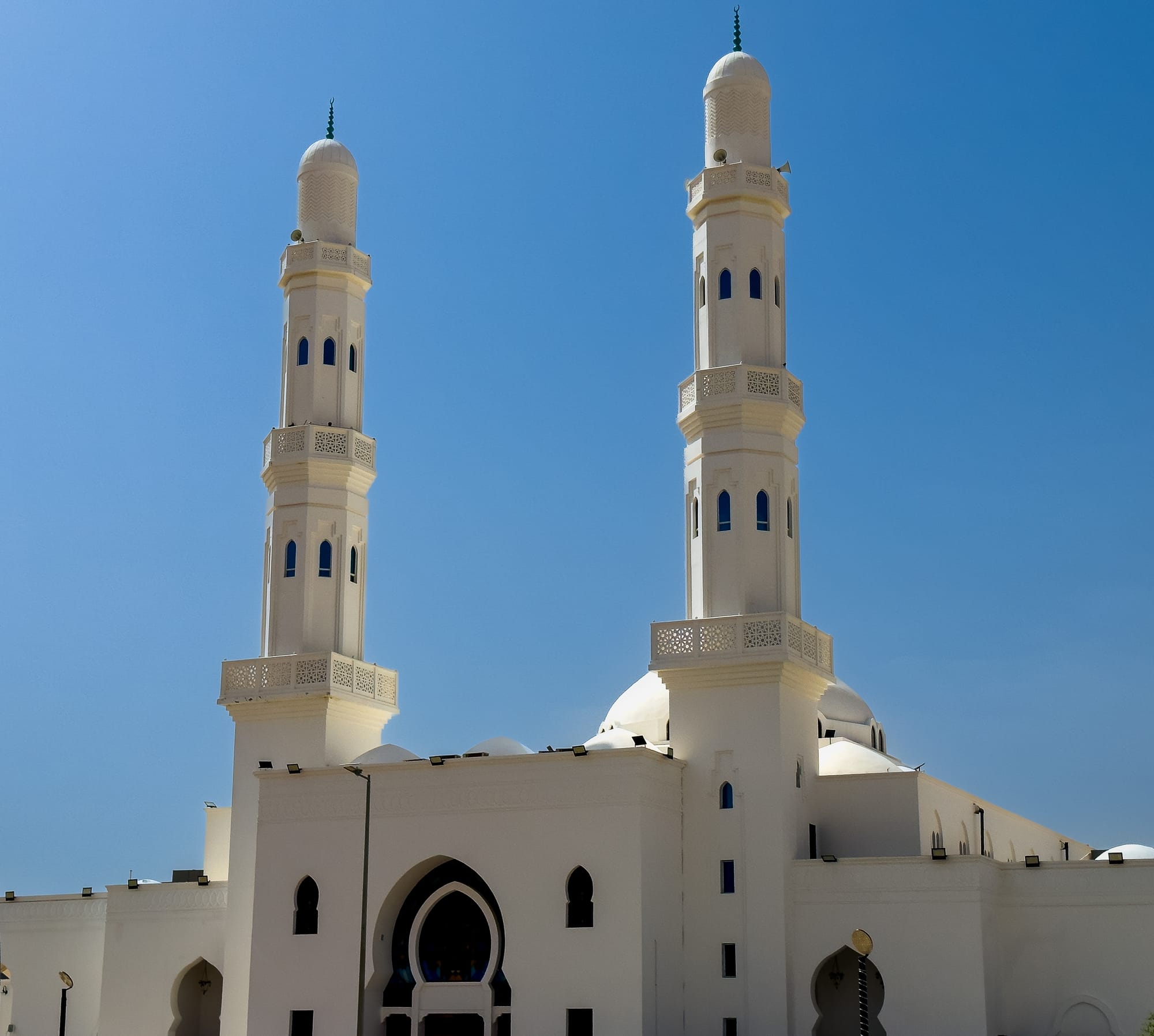
Battle of Uhud
Mount Uhud, 8 km long and 1010 m high, surrounds the plain of Madinah. The battle took place one year after the Battle of Badr, and the cemetery at the foot of the mountain honours the 70 companions who sacrificed their lives, the most notable being the uncle of the Prophet (SAW), Hamza ibn Abdul Muttalib (RA). It is also the site of Masjid Sayyid al-Shuhada, the second-largest mosque in Madinah.

During the battle, initially, the Muslims gained the upper hand, but thinking the battle was won, a group of Muslim archers abandoned their post on the mountain, disobeying Muhammad's (SAW) orders to maintain their position, thereby allowing the Quraish cavalry to attack from the rear. This unexpected turn of events led to confusion and disorder among the Muslims. The battle ended inconclusively, with both sides claiming some degree of victory. There were many deaths amongst the Muslims and Prophet Muhammad (SAW) was injured in the battle which served as a lesson for the Muslim community, highlighting the importance of discipline, obedience, and strategic planning in warfare.
Battle of Khandaq
The Battle of the Trench in Madinah was a key event in Islamic history in 5 AH. It demonstrated the strength of the Muslims who withstood the siege from a coalition of enemies by digging a trench to protect the city. Six mosques were built on the battlefield and became known as al-Masajid al-Sab’a, the "Seven Mosques", including the existing Masjid al-Qiblatain.
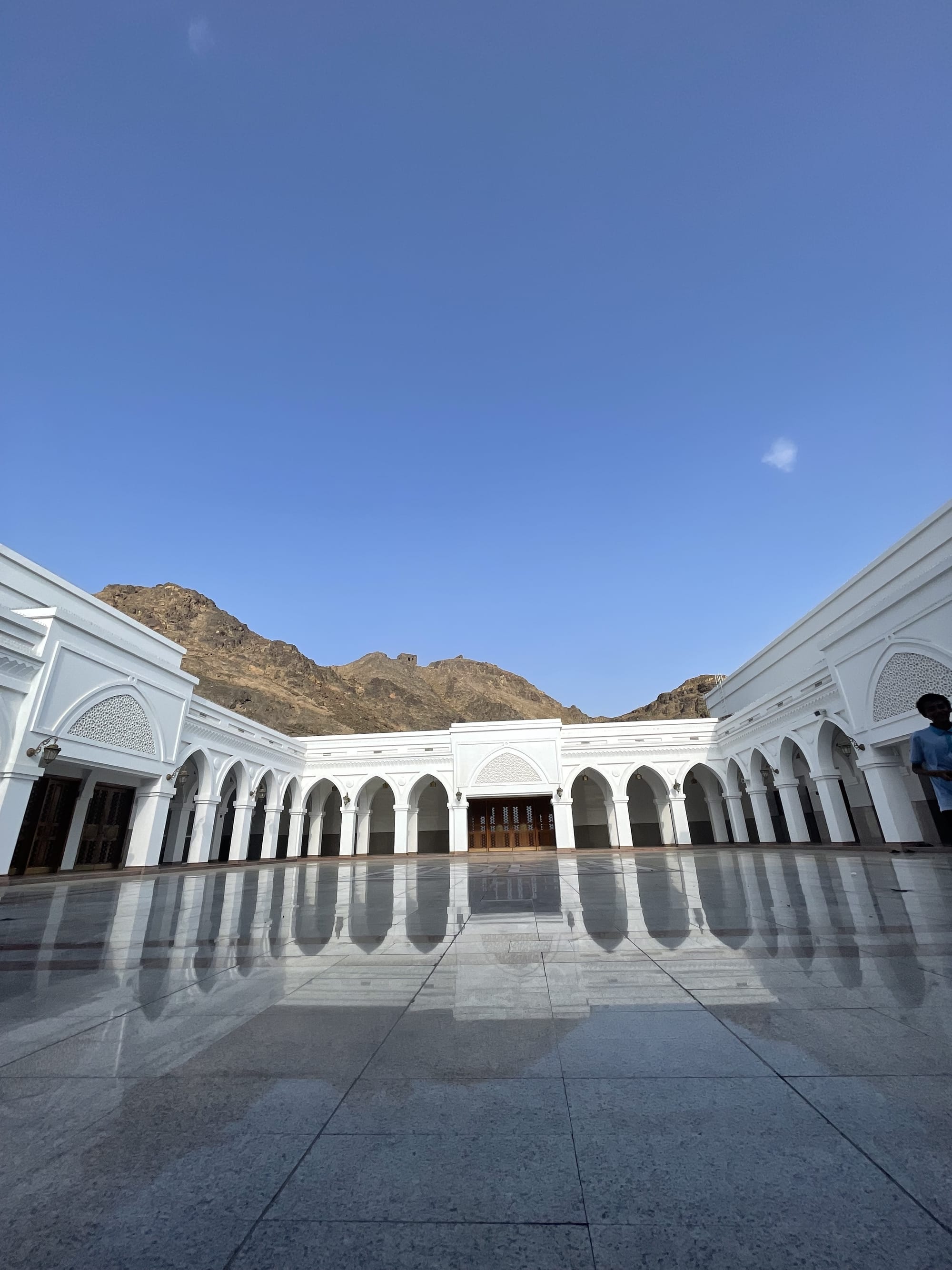
Al-Hudaybiyah
About 25 km from the centre of Makkah, Al-Hudaybiyah is where the historic Treaty of al-Hudaybiyah was signed in 6 AH. It was a peace agreement between the Prophet (SAW) and the Quraysh tribe of Makkah. A historic mosque and a new one are located next to each other, marking where the treaty was signed. Nearby is the well of Hudaybiyah, where the Prophet (SAW) performed a miracle by causing water to flow. The region now serves as a Miqat for pilgrims to enter into Ihram.
From the humble Cave of Hira, where the first verses of the Quran were revealed, to the battlegrounds of Badr and Uhud, these sites in early Muslim history remind us of the unyielding faith, resilience, and sacrifices of the Prophet (SAW) and his companions.
Centuries later, they still provide us with a profound connection to the birth and evolution of Islam.
Umrah + Seerah sites
Combine your Umrah pilgrimage with visits to the historic sites of the Seerah, following the significant events in the life of Prophet Muhammad (SAW) for an enriching and inspiring experience. For information on how to organise your DIY Umrah, read our dedicated blog article: Our Guide to DIY Umrah: The Most Rewarding Trip. Find your ideal Umrah accommodation at halalbooking.com, with a wide choice of hotels to suit all budgets. Use our exclusive features and Umrah-features to choose the perfect hotel for you, to make your Umrah more comfortable.
